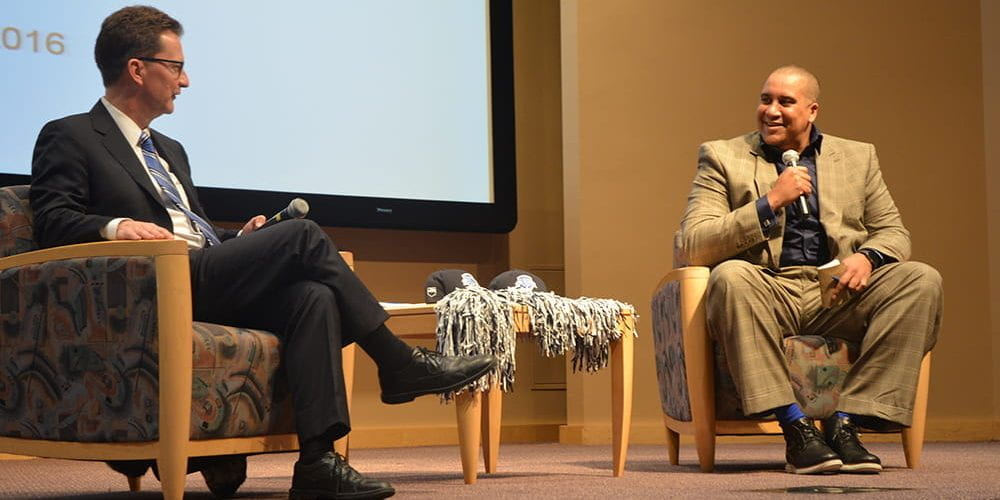In college athletics, there are few topics bigger today than name, image and likeness legislation as well as how the compensation college athletes should receive for their playing services should be determined.
On March 31, the Supreme Court will hear the oral argument in the NCAA v Alston litigation concerning the application of antitrust laws to college sports.
To provide a preview of this historic Supreme Court argument, on Friday, March 19, Penn State Law and the Penn State Center for the Study of Sports in Society presented a ‘moot court’ argument of the case before a distinguished panel: Judge David Hamilton of the US Court of Appeals for the Seventh Circuit, Chief Judge (Ret.) James Giles of the Eastern District of Pennsylvania, and Professor Jo Potuto of the University of Nebraska College of Law, a noted expert on sports law who has served on multiple NCAA committees.
The argument on behalf of the NCAA was presented by Professor Matt Mitten, Executive Director of the National Sports Law Institute at Marquette. The argument on behalf of the respondents was Professor Stephen Ross, Director of the Center for the Study of Sports in Society at Penn State.
The full argument can be found here.
Mitten initially argued that the lower courts’ rulings precluded the NCAA’s member educational institutes from prohibiting “pay for play” and maintaining the traditional amateur nature of college sports and its distinction from professional sports. Asserting that a free market compensation model for college athletics is not viable, he asked the Court to recognize that the NCAA is in the best position to “draw the line” of permissible compensation for student-athletes.
During the argument, Judge Hamilton asked how race played into the NCAA’s position on athlete compensation. Mitten responded by stating it’s a very important socio-economic issue that can’t be effectively addressed by anti-trust law. Mitten then continued by saying that affirmance of the Ninth Circuit’s Alston decision likely would inhibit the NCAA’s ability to promote racial and gender equality.
Ross started his argument for the respondents by stating the NCAA is adopting anti-competitive rules under the guise of the “integration of education and athletics,” and the NCAA decisions have had a significant anti-competitive effect in the result of trade not justified by pro-competitive objectives. He then stated that a complete ban on pay for student-athletes is not necessary to differentiate between college and professional athletics.
Ross disagreed with Mitten’s assertion that the NCAA is in a better position to draw the line of compensation. He argued that the NCAA is driven primarily by the commercialization of sports like football and basketball, not by the protection of amateurism. In the end, Ross argued that college sports will benefit from application of the antitrust laws, just as professional leagues have.
During his rebuttal period, Mitten said there has been no finding that each of the NCAA’s 17 challenged rules prohibiting “pay for play” had a substantial anticompetitive effect, and the district court’s use of less restrictive alternative analysis invites continuing case-by-case antitrust litigation challenging the NCAA student-athlete amateurism and eligibility rules.
